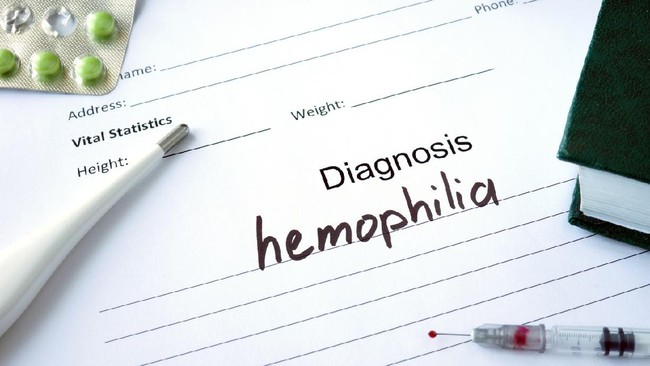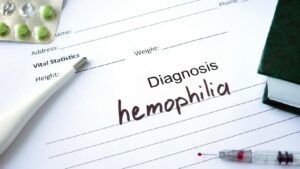

Welcome to a journey through the intricate world of blood disorders on World Hemophilia Day! Today, we delve into the realm where understanding and awareness intersect to shed light on conditions that impact millions of lives globally. Join us as we explore the causes, symptoms, treatments, and daily challenges faced by those living with hemophilia and other common blood disorders. Let’s embark on this enlightening voyage together!
Understanding Hemophilia: Causes, Symptoms, and Treatment
Hemophilia is a rare genetic blood disorder that affects the body’s ability to clot properly. It is caused by a deficiency in certain blood clotting proteins, known as factors, which can lead to excessive bleeding even from minor injuries. Symptoms of hemophilia may include easy bruising, prolonged bleeding from cuts or dental work, and spontaneous internal bleeding into joints and muscles. These symptoms can vary in severity depending on the type of hemophilia a person has.
Treatment for hemophilia typically involves replacing the missing clotting factors through intravenous infusions. This helps to control bleeding episodes and prevent complications. In severe cases, prophylactic treatment may be necessary to reduce the risk of spontaneous bleeds. Managing hemophilia requires close monitoring with a healthcare team specialized in treating this condition. By understanding the causes, recognizing symptoms early, and following an appropriate treatment plan, individuals with hemophilia can lead fulfilling lives despite their diagnosis.
Other Common Blood Disorders
Blood disorders encompass a wide range of conditions beyond hemophilia. One common blood disorder is anemia, which occurs when the body lacks enough healthy red blood cells to carry adequate oxygen to tissues. Another prevalent disorder is leukemia, a type of cancer that affects the bone marrow and leads to abnormal white blood cell production.
Thrombocytopenia is yet another condition where there’s a low platelet count, impacting the blood’s ability to clot effectively. Sickle cell disease is inherited and causes red blood cells to become rigid and form a crescent shape, leading to various complications. Additionally, hemochromatosis results in excess iron absorption by the body, affecting organs like the liver and pancreas.
Each of these disorders presents unique challenges and requires specialized treatment approaches tailored to individual needs. Understanding these conditions helps raise awareness about the diverse nature of blood disorders beyond hemophilia on World Hemophilia Day.
The Impact of Hemophilia on Daily Life
Living with hemophilia can present daily challenges that require careful management and adjustments. From a young age, individuals with hemophilia must navigate a unique set of considerations in their daily routines. Simple activities that others take for granted, like playing sports or even brushing teeth, may carry an increased risk of bleeding episodes.
Managing hemophilia often involves regular visits to healthcare providers for treatment and monitoring. This can disrupt work or school schedules but is crucial for maintaining overall health and preventing complications. Additionally, the financial burden associated with ongoing medical care and treatments can add stress to everyday life.
Despite these challenges, many individuals with hemophilia lead fulfilling lives by taking proactive measures to protect their health. By working closely with healthcare providers, staying informed about new treatment options, and seeking support from loved ones and advocacy groups, those living with hemophilia can better manage its impact on their daily lives.
World Hemophilia Day and its Purpose
World Hemophilia Day, observed on April 17th every year, aims to raise awareness about hemophilia and other inherited bleeding disorders. This global initiative seeks to improve diagnosis and access to treatment for individuals affected by these conditions. Through education and advocacy efforts, World Hemophilia Day strives to empower patients and caregivers with knowledge about managing the challenges of living with a blood disorder.
The purpose of this day is not only to highlight the impact of hemophilia on individuals but also on their families and communities. By shedding light on the importance of early detection and appropriate care, World Hemophilia Day plays a crucial role in improving the quality of life for those affected. It serves as a platform for healthcare professionals, policymakers, and advocates to come together in support of better treatment options and increased resources for managing blood disorders effectively.
As we commemorate World Hemophilia Day each year, let us recommit ourselves to promoting understanding and acceptance for individuals facing these health challenges. By joining forces in solidarity, we can work towards creating a more inclusive society where everyone has equal opportunities for health and well-being.
Advocating for Better Treatment and Support for Those with Blood Disorders
Advocating for better treatment and support for those with blood disorders is crucial in improving their quality of life. By raising awareness and pushing for advancements in medical research, we can ensure that individuals living with these conditions receive the care they deserve. It’s essential to advocate for increased access to specialized healthcare services tailored to meet the unique needs of patients with blood disorders. This includes promoting education among healthcare professionals to enhance diagnosis and treatment options.
Furthermore, advocating for improved insurance coverage and financial assistance programs can alleviate the burden of high medical costs on families affected by blood disorders. By coming together as a community on World Hemophilia Day and beyond, we can amplify our voices and make a meaningful impact in advocating for better resources, support, and understanding for those living with blood disorders.
Conclusion
World Hemophilia Day serves as a crucial reminder of the challenges faced by individuals living with blood disorders, particularly hemophilia. It is a day to raise awareness, advocate for better treatment and support systems, and show solidarity with those affected by these conditions. By understanding the causes, symptoms, and treatments of hemophilia and other common blood disorders, we can work towards improving the quality of life for those impacted.
As we look ahead to World Hemophilia Day in 2024 and beyond, let us continue to educate ourselves about these conditions, support research efforts aimed at finding new treatments, and ensure that individuals with blood disorders receive the care and resources they need to thrive. Together, we can make a difference in the lives of those living with hemophilia and other blood disorders. Let’s stand united in our commitment to promoting health and well-being for all.






